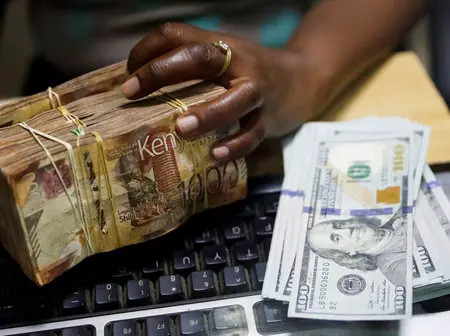The Kenyan shilling is trading under sustained pressure in the foreign exchange market as it continues to lose ground against a range of global currencies.
Latest market data indicates that the shilling has weakened against major currencies including the US dollar, the euro and the British pound, while also showing mixed performance against regional and Asian currencies.
Against the US dollar, the shilling has depreciated further, reflecting the strong demand for hard currency from importers and external debt obligations. The dollar’s global strength, supported by higher interest rates in the United States, has added to the pressure, making imports more expensive and raising the cost of servicing Kenya’s foreign-denominated loans.
The euro has also gained significantly, with the shilling trading at weaker levels as European markets stabilize and capital flows into the region improve. The British pound continues its resilience as well, pushing the shilling lower in comparison.
In the African region, the shilling has shown relative stability against the Ugandan and Tanzanian shillings but remains weaker when paired with the South African rand, which has strengthened on the back of commodity-linked inflows.
In Asia, the Kenyan currency has lost ground to the Chinese yuan and Japanese yen, currencies that play a critical role in Kenya’s import and export markets. The weakening trend highlights the challenges facing businesses that rely heavily on imports from Asia, especially in sectors such as electronics, machinery and consumer goods.
Forex traders and analysts attribute the ongoing depreciation to heightened dollar demand from oil importers, delays in external funding inflows and persistent concerns about Kenya’s widening trade deficit.
The pressure on the shilling has also been exacerbated by global market volatility, with investors favoring stronger currencies in times of uncertainty.
For ordinary Kenyans, the weakening shilling translates into higher costs of living as imported goods and fuel become more expensive. Businesses are also grappling with rising input costs, while exporters may find some relief as a weaker currency boosts competitiveness in foreign markets. The Central Bank of Kenya continues to monitor the situation closely, with interventions expected if volatility intensifies.
The trajectory of the shilling in the coming weeks will depend heavily on global currency trends, external financing inflows and the country’s ability to manage its import bill. As pressure persists, market watchers warn that sustained weakness could further strain economic recovery efforts.

Leave a Reply